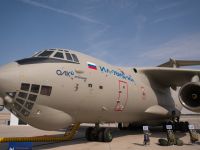Refining:
Algeria has four oil refineries with combined capacity of 503,000 bbl/d. Algeria's refineries are capable of meeting most of the country's domestic requirements. However, since they lack substantial depth in secondary processes, limited amounts of gasoline and kerosene still are imported.
The 29,000-bbl/d Hassi Messaoud plant supplies products to southern Algeria, as does the smaller 7,000-bbl/d In Amenas plant. The el-Djazair refinery processes crude, which is shipped north from Hassi Messaoud. While naphtha production from the refinery is exported, mainly to the United States, the balance of el-Djazair product output is consumed in central Algeria.
Finally, the coastal 59,000-bbl/d Arzew refinery, which uses Algerian Saharan blend as feedstock, produces both heavier and light products for domestic consumption and export.
According to Middle East Economic Digest, Algeria's domestic demand would support a new 150,000 - 200,000 bbl/d refining facility, but the estimated $1.5-billion cost of the planned facility is prohibitively expensive at this time.
In 1999, Algeria exported an average of 230,000 bbl/d of refined products to the United States, as well as 25,000 bbl/d of crude oil.
Petrochemicals:
Although Algeria has a substantial petrochemical and fertilizer industry, low capacity utilization rates mean continued reliance on imports. The majority of Algeria's petrochemical plants are located at Annaba (a 550,000-ton- per-year (t/y) - ammonium phosphate fertilizer plant and ammonium nitrate and nitric acid complex), Arzew (365,000 t/y ammonia, 146,000 t/y urea, and 182,500 t/y ammonium nitrate), and Skikda (a 130,000 t/y high-density polyethylene unit, 120,000-t/y ethylene cracker, and a substantial aromatics complex).
Sonatrach has undertaken a number of petrochemical and fertilizer expansion projects, including a new methyl tertiary butyl ether (MTBE) complex and a polyester resin complex.
Terminals:
Algeria has seven coastal terminals for crude oil, refined product, NGL, and liquefied natural gas (LNG) exports. These are located at Algiers, Annaba, Arzew, Bejaia, Oran, Skikda, and La Skhirra. The two ports at Arzew handle about 40 percent of Algeria's total hydrocarbon exports.
LNG is shipped from Arzew and Skikda. Additionally, Arzew handles all of Algeria's NGL exports. Algeria uses the Tunisian port of La Skhirra exclusively for crude exports.
NATURAL GAS:
Commercial production of natural gas began in 1961. Algeria has 160 trillion cubic feet (Tcf) of proven natural gas reserves, primarily associated, ranking it in the top 10 worldwide.
Sonatrach estimates that Algeria's ultimate gas potential is around 204 Tcf. According to Sonatrach, natural gas represented 57 percent of Algeria's total proven hydrocarbons reserves in 1998.
Algeria accounts for one-quarter of EU gas imports. Algeria's largest gas field is the super-giant Hassi R'Mel, which initially held proven reserves of about 85 Tcf. Hassi R'Mel accounts for around 1.35 billion cubic feet (Bcf) per day, or about a quarter of Algeria's total dry gas production.
The remainder of Algeria's gas reserves are located in associated and non-associated fields in the southeast, and in non-associated reservoirs in the In Salah region of southern Algeria.
The Rhourde Nouss region holds 13 Tcf of known reserves in the Rhourde Nouss, Rhourde Nouss Sud-Est, Rhourde Adra, Rhourde Chouff, and Rhourde Hamra fields. Smaller gas reserves are located in the In Salah region (5-10 Tcf) as well as at the Tin Fouye Tabankort (TFT)(5.1 Tcf), Alrar (4.7 Tcf), Ouan Dimeta (1.8 Tcf), and Oued Noumer fields. Four plants at Arzew and Skikda, owned by Sonatrach, liquefy gas for export.
Pipeline Exports:
In 2000, Algeria's natural gas pipeline export capacity of 1.38 Tcf per year includes 988.6 Bcf/y via the Trans-Mediterranean (Transmed) line to Italy and 388 Bcf/y via the new Maghreb-Europe Gas (MEG) line to Spain (and beyond to Portugal via an extension).
The 667-mile Transmed pipeline links the Hassi R'Mel gas field to Mazzara del Vallo in Sicily. Transmed comprises segments through Algeria (548 km / 342 miles), Tunisia (368 km /230 miles), under the Mediterranean ( 154 km /96 miles) to Sicily and then on to Slovenia.
The Hassi R'Mel-Oued Saf-Saf link to the Tunisia border originally consisted of two parallel 48-inch lines. With the signing of a revised gas supply contract, however, the three international links have been augmented with several 48-inch and 24-inch lines as well as at least four compressor stations.
Until recently, the Algerian segment of the Transmed pipeline had a slightly higher capacity (1.5 Bcf/d) than the Tunisia-Italy link (1.15 Bcf/d). There are plans to add two compressor stations in Algeria and two in Tunisia by end-2000. The new stations would enable the pipeline to carry up to 1 Tcf/y to Italy and Slovenia.
Most of the gas from this line is taken by Italy's main gas utility Snam, which is under contract to buy 680 Bcf/y from 1997 until 2018. Tunisia purchases about 39 Bcf/y, with 14 Bcf/y committed until 2020 under a deal signed in March 1997, and the rest bought on spot basis and in lieu of transit fees.
Slovenia's Sozd Petrol is committed to 21 Bcf/y until 2007 under a contract signed in January 1990. Petroleum Economist reports that Algeria plans to expand the capacity of the Transmed line by 212 Bcf/y.
The, 1,013-mile-long, $2.5-billion MEG pipeline was jointly financed by Sonatrach and Spain's Enagas, the line's main customers. MEG is made up of five sections: 324 miles from Hassi R'Mel to the Moroccan border, 326 miles across Morocco to the Strait of Gibraltar, 28 miles across the Strait of Gibraltar at a depth of 1,312 feet, 168 miles from the Spanish coast to Cordoba, Spain where it ties into the Spanish transmission network, and 168 miles to Portugal.
The section to Portugal came onstream in March 1997. The Algerian section of MEG was built by U.S.-based Bechtel and consists of a 48-inch line with a design capacity of 695 million cubic feet per day (MMmcf/d).
At the Strait of Gibraltar, the line doubles into two 24-inch segments. In November 1996, Enagas began taking gas from the pipeline, and under a contract signed in June 1992, Enagas will buy 212 Bcf/y and occasionally take additional quantities until 2020.
Another customer for the MEG line is Portugal's Transgas, which received 88 Bcf of Algerian gas in 1997. Efforts are reportedly underway to expand MEG to France and Germany. Petroleum Economist reports that Algeria plans to expand the MEG line by 335.5 Bcf/y, bringing its capacity to nearly 1 Tcf/y.
The European Commission has forecast that Algerian exports will not exceed a 25 percent share of the European gas market through 2020. In contrast, Europe's two other major gas suppliers, Norway and Russia, are both expected to maintain or expand their 25 percent market shares.
In addition, Algeria has maintained a longstanding policy to develop its gas reserves as a source of domestic energy and as a raw material for the petrochemical industry. Approximately 95 percent of the country's electricity is generated by gas.
Development of the In Salah region is one of the lynchpins in Algeria's plan to increase its gas exports. In December 1995, British Petroleum (BP) and Sonatrach signed a $3.5-billion deal to develop seven of the twelve existing fields in the In Salah region, including the Garat al-Bafinat, Teguentour, Krechta, Reg, In Salah, Hassi Moumeme, and Gour Mahmoud fields.
These fields contain estimated dry gas reserves of 5 Tcf, with a potential for 10 Tcf total.
In addition, the joint venture, called In Salah Gas, will appraise existing wells and explore for new gas reserves in the In Salah region.
In Salah Gas is the first major gas joint venture between Sonatrach and a foreign partner. Production from the region is expected to come online in 2002, after the drilling of up to 200 production wells and construction of a $1-billion, 48-inch pipeline link to Hassi R'Mel.
Under the profit-sharing agreement, project investment is split 65 percent BP, 35 percent Sonatrach with BP funding the estimated $100-million cost of the seismic program and a nine well drilling program that includes five appraisal and four exploration wells.
In May 1997, In Salah Gas sealed its first gas sales deal with Italian electricity generator Enel.
The deal enables In Salah Gas to take over an existing contract to supply Enel with 141 Bcf/y of gas. Sonatrach will continue supplying the Italian power giant with gas supplies until In Salah is ready to start feeding the contract in 2002.
The deal represents In Salah's first step towards achieving its sales goal of 318-388 Bcf/y by early next century. The venture is also marketing gas to potential clients in Europe, Turkey and North Africa.
Following are details of several joint ventures in Algeria's gas sector:
Amoco Corp. announced in June 1998 (before its merger with BP) that it has signed an agreement with Sonatrach to develop gas fields in the In Amenas area of southern Algeria. The $900-million deal involves numerous wells, pipeline infrastructure and a gas treatment plant that will handle 700 MMcf/day. First gas production from the area is expected in 2002.
Petro-Canada is continuing exploration activities in Algeria after its second natural gas find in early 1998. The well, known as Timellouline Sud-1, tested at daily rates of 117 million cubic feet of gas and 5,820 barrels of condensate. In 1998, Petro-Canada spent one-half of its $35 million budget for international activities in Algeria.
Spain's REPSOL will develop its Tin Fouye Tabankort gas field, with operational startup by the end of 1999. The project is one of three investments in Algeria (the others are an oil field and a petrochemical plant) by the company totaling $540 million over the next five years.
Source: United States Energy Information Administration.
© 2000 Mena Report (www.menareport.com)







